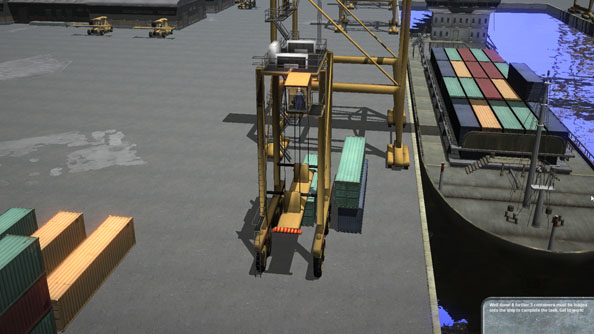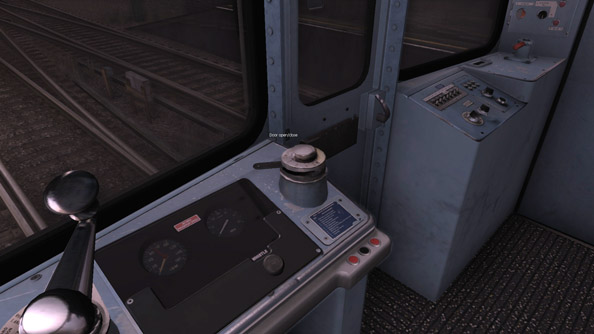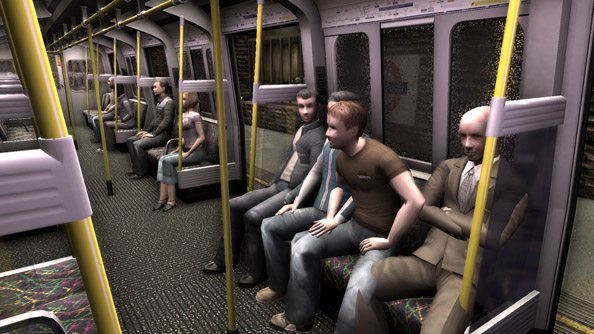Hello, I’m a London Underground train driver! The worst London Underground train driver in the world, in fact. The sort of train driver who’ll stop the train in the middle of a tunnel to blow the whistle and play with the passenger lights. The sort of train driver who will wander up and down the carriages, clicking on your low-poly face just to see if that does anything (it doesn’t). I’m a crappy train driver, I’ve also been a crappy street cleaner, a crappy ski resort owner, a crappy delivery van driver and a crappy tram operator. And in my varied and mostly crappy career, I’ve figured out how to make these tedious job simulators better. It’s simple, really.
More buttons. There are loads of buttons in my favourite simulators – the ones I’d recommend to a friend. Switches too. I don’t even know what some of them do. The more buttons you have on your simulated dashboard, the better your simulator is going to be. That is, after all, the entire point of simulations: they’re a means to escape the grim reality of the everyday buttons that exist all around us. Those buttons, those real buttons, must never be pressed. They are out of bounds. Fire alarms, mystery levers, secret chandelier controls, this one above my bathroom door that says ‘isolator’ on it with a pictogram that looks like somebody about to rudely slap an apple out of a Dalek’s hand, all of them are strictly off limits.
These real buttons exist for somebody else to press, some sort of engineer or qualified specialist. Not for me. Virtual buttons, on the other hand,are a playground for the obedient brain. I’ve played enough of these games now to see the clear differences between a richly detailed simulator and the sort of buggy, anaemic, button-lacking efforts that drag the whole genre’s reputation into the dirt – where the more condescending gamers sneer and mock from their ivory “cooler genre”towers. It always comes down to buttons. The quantity and variety of buttons.
Ports: Pressure At The Port is a fine example of a poor, switch-starved simulator. In it, you’re tasked with moving shipping containers around a port using several different kinds of crate-lifting vehicle, including something called a “straddle arm” (pictured above). I’ll take the biggest of these vehicles as an example of precisely what’s wrong with this so-called simulator: a building-sized crane used for placing containers on a boat, all nice and ready for shipping. Ports: Pressure At The Port would have you believe that operating this highly technical piece of equipment can be achieved using just the W, A, S and D keys, which isan insulting, reductivesimplification of what is no doubt a complicated and button-heavy process. I am being serious. I care about buttons, and Ports doesn’t have them. It’s not a simulation, it’s a toy, achild’s arcade game (which is fine, but somewhat misleading when presented with that ubiquitous Microsoft Flight Simulator font).
A good simulator should baffle as much as it inspires. On entering that container crane, the player should be presented with an undulating landscape of pressure gauges, monitors, dials, knobs and widgets. The thing being simulated should look like something that requires a mandatory week-long training course before you’re qualified to even turn it on. It should look like something that you could accidentally break and have to call somebody over to fix while you stand in the corner and mutter apologies. Otherwise, we’re just simulating Matchbox JCBs in the playground. Simulators are capable of so much more.
World of Subways Volume 3: London Underground Simulator is a disarmingly sincere and detailed simulator. A rough-edged depiction of pootling about the most ancient metro system in the world. It’s also unexpectedly fascinating, a shimmering example of what Tedious Job Simulators shouldbe and, for the most part, sadly aren’t. By default the engine renders everything with a slightly fuzzy, ethereal edge, as if you’re part of the tube driver’s dream, but these over-glossy visuals present a strangely accurate and strikingly familiar vision of the tube, albeit one littered with copyright-violating textures and quirky AI passengers. Small details: the condensation gathering on windows on cold days, the authentic warning beeps of closing doors, the ability to fire off pre-recorded announcements, it’s these tiny embellishments thataugment and enrich the simple act of just making the traingo. Seriously.
London Underground Simulator isn’t alone. Bus & Cable Car Simulator is an open world sim heaving with this sort of seemingly needless background detail. You can set bus routes, change the destination as it’s displayed on the front of your cable car, collect fares from passengers, paying mind to discounts for veterans, children and the disabled.
That’s precisely the sort of strange, button-festooned nonsense that I adore, and the sort of nonsense that the very best simulators are made of. The more meticulous the action, the smaller the screw being simulated, the more exhaustive the dashboard, the more buttons that it has, the better the simulator is – and the crappier a train driver I may be.
